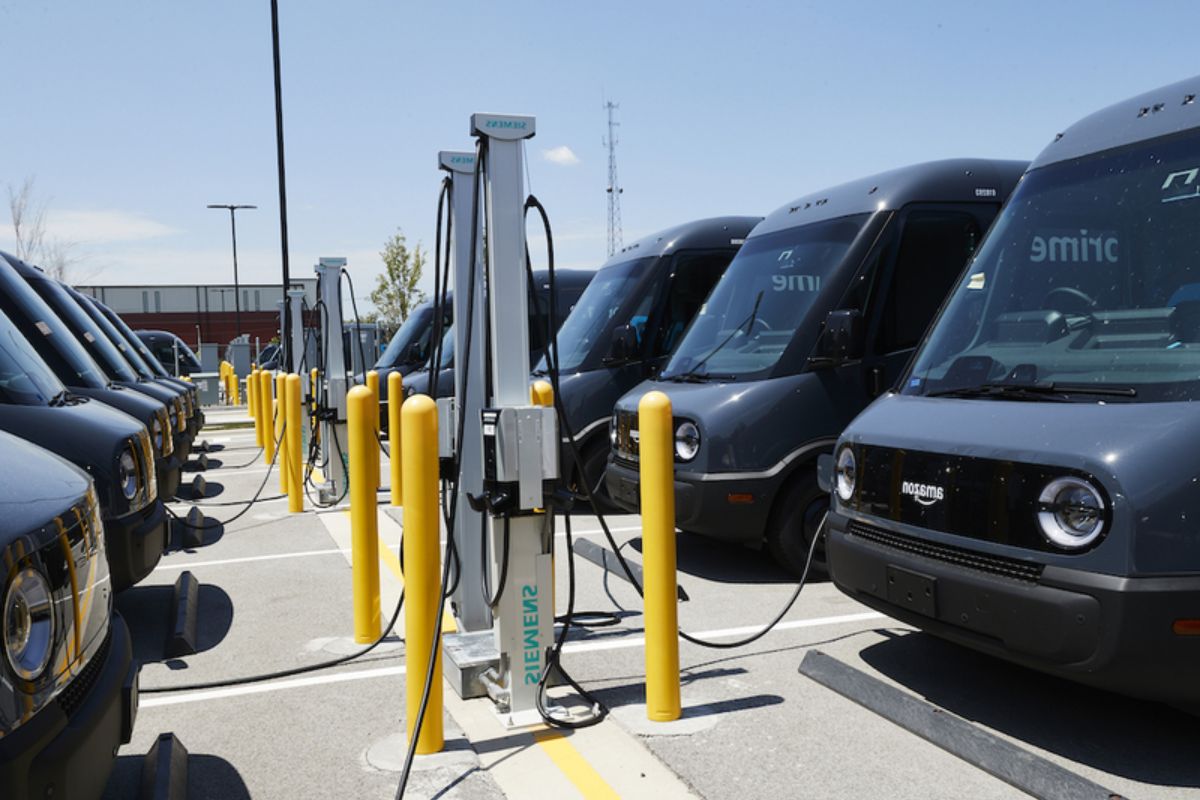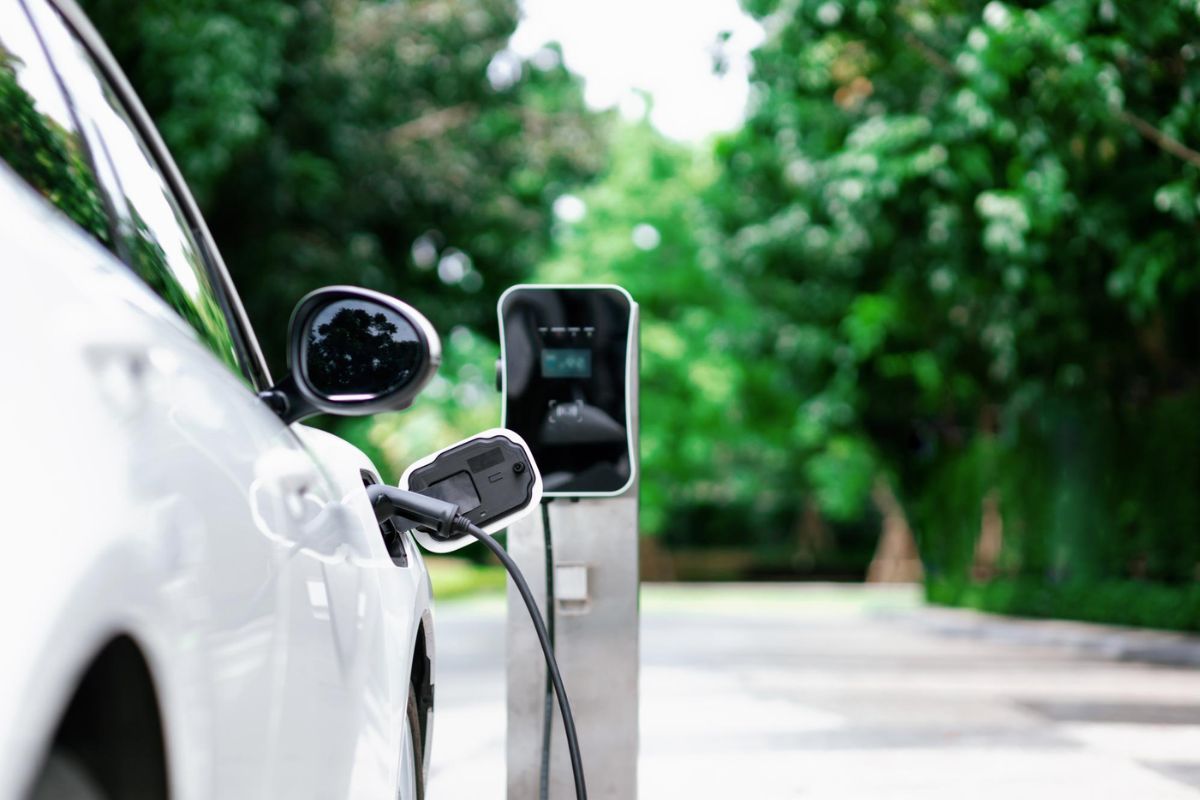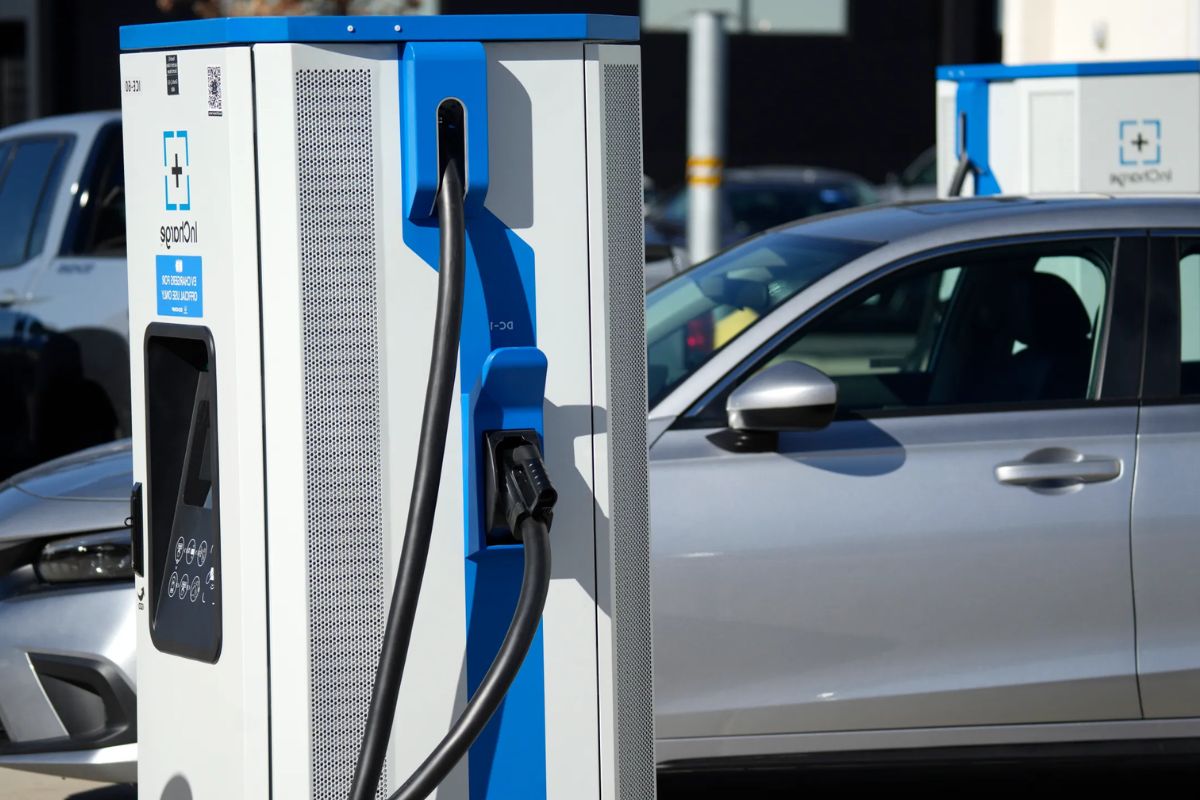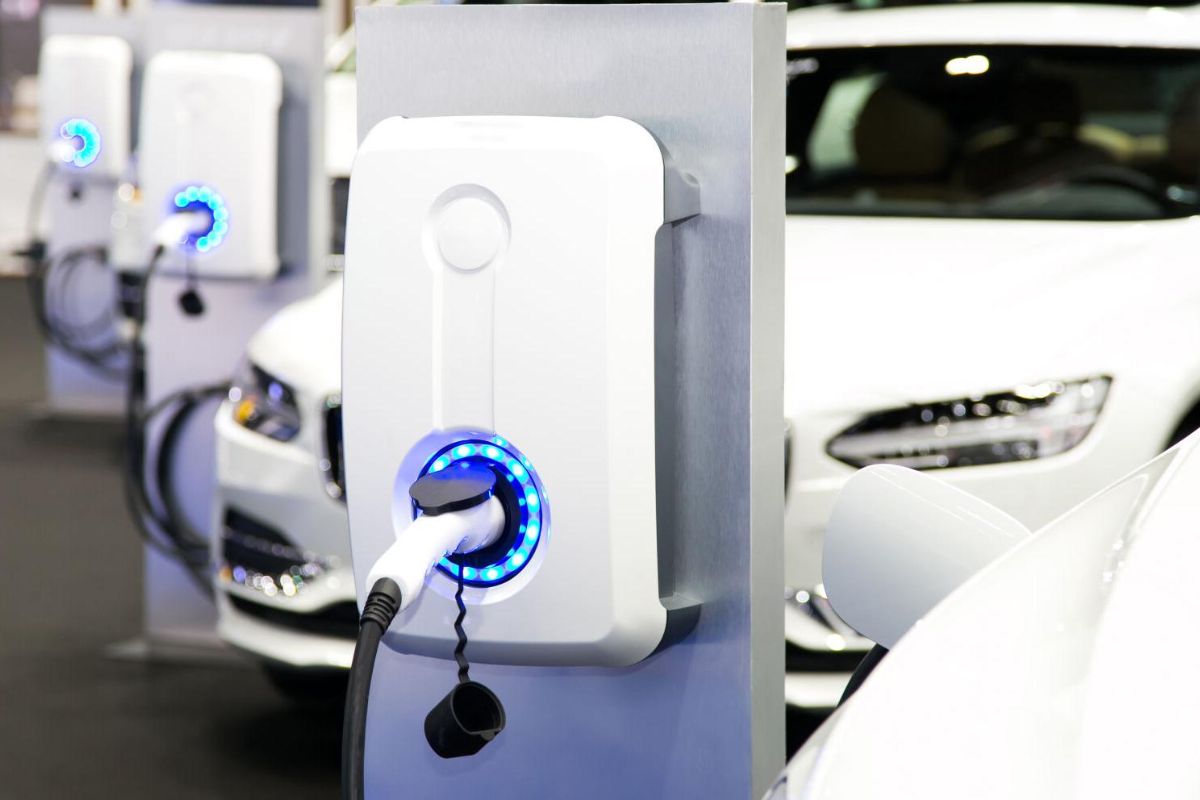Boosting EV Infrastructure: Illinois recently made a significant stride in bolstering its electric vehicle (EV) infrastructure by securing a $7 million funding allocation for the installation of charging stations. This development not only highlights the state’s commitment to promoting sustainable transportation, but also underscores the growing recognition of the importance of EVs in mitigating climate change.
While the infusion of funds is undoubtedly a step in the right direction, it is essential to critically examine the challenges associated with EV charger construction, the effectiveness of government spending on green initiatives, and the need for a balanced approach that aligns policy goals with real-world outcomes.
By delving deeper into these aspects, we can gain a clearer understanding of the implications and potential of Illinois’ investment in EV charging stations.
Key Takeaways
– Illinois has secured $7 million in funding for EV charging stations, demonstrating the state’s commitment to sustainable transportation and Governor JB Pritzker’s goal of one million EVs on the road by 2030.
– Columbia has received a $3.6 million federal grant for EV charging stations, enabling the installation of 44 charging stations in key locations across the city. This investment enhances accessibility and convenience for EV owners, encouraging more residents to adopt electric vehicles and aligning with the city’s sustainability goals.
– Funding is also being allocated to improve the reliability and accessibility of charging stations, targeting maintenance of over a hundred charging ports, including Level 2 and Direct Current Fast Charging (DCFC) ports. This supports the goal of having one million EVs on the road by 2030, with an additional investment of nearly $15 million for new charging stations.
– Challenges in EV charger construction include disparities in charging infrastructure needs due to lack of demand, delays caused by regulations and bureaucratic hurdles, compliance with permits, zoning restrictions, and environmental regulations, as well as union requirements limiting the contractor pool and potentially increasing costs. A market-driven approach is needed to address regional demand and streamline processes.
Also Read: Indonesia EV industry Leadership Faces Challenges: Pricing, Brands, and Infrastructure
Columbia’s $3.6 Million Federal Grant: Boosting Electric Vehicle Infrastructure
Columbia’s electric vehicle infrastructure is set to receive a significant boost through a $3.6 million federal grant, paving the way for the installation of 44 EV charging stations in key locations across the city. This funding will not only enhance the accessibility and convenience of charging for electric vehicle owners but also encourage more residents to adopt electric vehicles.
By strategically placing these charging stations in two parking garages, the regional airport, and the public library, the city is ensuring that EV owners have convenient access to charging facilities while going about their daily activities. Furthermore, this initiative aligns with the city’s broader sustainability goals by promoting the use of cleaner transportation options.
The installation of these charging stations will also support the transition of the city’s municipal fleet towards electric alternatives, further reducing emissions and promoting a greener future for Columbia. Overall, this federal grant is a crucial step towards building a robust electric vehicle infrastructure in the city.
Illinois Secures $7 Million: Strengthening State’s Electric Vehicle Charging Infrastructure
Illinois has secured a significant funding of over $7 million from the Federal Highway Administration’s E-V Charger Reliability and Accessibility Program, aiming to strengthen the state’s electric vehicle charging infrastructure. This funding comes at a crucial time when the state is actively working towards Governor JB Pritzker‘s ambitious goal of having one million electric vehicles on the road by 2030.
With more than a hundred charging ports targeted for maintenance, including both Level 2 and Direct Current Fast Charging (DCFC) ports, the reliability and accessibility of public charging stations will be greatly improved. This investment not only addresses the current concerns about the charging infrastructure but also paves the way for a future where electric vehicles are the norm.
Furthermore, the state’s Community Charging Program will receive an additional investment of nearly $15 million for the construction of new charging stations, further enhancing the accessibility and convenience for electric vehicle owners.
Challenges in EV Charger Construction: Market Demand and Bureaucratic Hurdles
The construction of electric vehicle (EV) chargers faces significant challenges due to market demand disparities and bureaucratic hurdles. Despite the Biden administration’s investment in EV charger infrastructure, there are several factors inhibiting progress in this area.
Here are three key challenges:
Lack of demand: Despite the push for electric vehicles, the demand for EV chargers is not evenly distributed. This creates a disparity between areas where charging infrastructure is needed and areas where it is not, making it difficult to allocate resources effectively.
Stringent regulations: The regulatory framework surrounding EV charger construction can be complex and time-consuming. This includes obtaining permits, navigating zoning restrictions, and complying with environmental regulations. These bureaucratic hurdles add delays and increase costs.
Union requirements: In some cases, union requirements can create additional challenges. Contractors may need to meet specific labor standards, which can limit the pool of available contractors and potentially drive up costs.
These challenges highlight the need for a market-driven approach that takes into account regional demand and streamlines the bureaucratic process. By addressing these hurdles, we can accelerate the deployment of EV chargers and ensure the success of the transition to electric transportation.
Critiques and Concerns: Evaluating Government Spending on Green Initiatives
Government spending on green initiatives has generated both critiques and concerns regarding the effectiveness and impact of these investments, particularly in the context of electric vehicle adoption and charging station construction. Critics argue that despite substantial funding, tangible results in EV adoption and charging infrastructure remain limited.
Factors such as stringent regulations, union certification requirements, and the Biden administration’s focus on directing federal investment to disadvantaged communities add complexity to implementation. Market-driven initiatives are seen as a more efficient approach, with critics questioning the efficiency of extensive government spending.
Additionally, concerns are raised about the reliability of charging stations during adverse weather conditions. Evaluating the effectiveness of government spending on green initiatives is crucial to ensure that taxpayer money is being used efficiently and that the desired outcomes are achieved.
Navigating the road ahead in promoting electric vehicle adoption and achieving a sustainable and effective EV charging network requires a careful balance of policy goals and real-world outcomes. The complexities involved in implementing EV charging infrastructure highlight the challenges policymakers face in translating their vision into tangible results.
To successfully navigate this path, it is crucial to consider the following:
1. Demand-driven approach: Understanding the needs and preferences of EV users is essential in determining the optimal placement and number of charging stations. By analyzing data on EV ownership, travel patterns, and charging behavior, policymakers can ensure that charging infrastructure is strategically deployed to meet actual demand.
2. Regulatory framework: Developing clear and consistent regulations is crucial for fostering private investment in charging infrastructure. By creating a favorable business environment, policymakers can incentivize market-driven initiatives and encourage the participation of various stakeholders, including utilities, private companies, and local communities.
3. Community engagement: Engaging local communities in the planning and implementation process is essential for building public support and addressing concerns. By involving residents, businesses, and other stakeholders, policymakers can ensure that charging infrastructure is integrated into the fabric of the community, minimizing potential conflicts and maximizing its positive impact.
Conclusion Of Boosting EV Infrastructure
In conclusion, the $7 million secured by Illinois for electric vehicle charging stations is a positive step towards boosting the state’s EV infrastructure.
However, challenges such as market demand and bureaucratic hurdles need to be addressed in order to ensure successful construction of EV chargers.
Furthermore, evaluating the effectiveness of government spending on green initiatives is crucial to ensure that resources are being allocated efficiently.
Balancing policy goals with real-world outcomes will be essential in navigating the road ahead for electric vehicle infrastructure.
Our Reader’s Queries
Q1 What is the charging infrastructure grant program in Illinois?
A Governor JB Pritzker has revealed that Illinois has successfully obtained $14.9 million in competitive federal grant funding through the US Department of Transportation’s Charging and Fueling Infrastructure (CFI) Discretionary Grant Program for Fiscal Year 2022-2023.
Q2 What is the $4000 EV rebate in Illinois?
A Under the Climate & Equitable Jobs Act (CEJA), Illinois offers consumer rebates, providing up to $4,000 cashback for the acquisition of an all-electric vehicle and $1,500 for an all-electric motorcycle purchase. Please note that there are currently no open funding rounds. For more information, refer to the details of the Illinois EV Rebate Program.
Q3 How much are EV plates in Illinois?
A The title fees for a new electric vehicle (EV) in Illinois amount to $165. Since 2020, EVs incur an annual plate registration fee of $251, a substantial increase from the previous years’ $17.50.




